Your home should be more than just a place to sleep and eat. It should be a peaceful space that helps you feel healthy, happy, and successful. If your home feels stuck, messy, or just doesn't feel right, the problem might be how the energy flows through it. This is where Feng Shui can help. A good feng shui house layout means arranging your home's rooms and furniture in a way that helps positive life energy, called Qi, flow smoothly. When you do this right, you can feel better, get along better with family and friends, and create a space that helps you succeed. This guide will teach you everything you need to know, from basic ideas to practical tips for each room, so you can turn your house into a truly peaceful home.
The 3 Basic Ideas You Need to Know

Before you move any furniture, you need to understand the main ideas that make a feng shui house layout work well. These three basic concepts are like the foundation of a house - everything else is built on top of them. Once you understand these ideas, you can start to feel the energy in your own space instead of just following rules.
Understanding Qi: Life Energy
Qi is invisible life energy that flows through everything in the world, including your home. Think of Qi like water flowing in a river. In a perfect home, Qi flows like a gentle stream that curves and bends, reaching every corner and bringing good energy to the whole space. If the flow gets blocked by mess or bad room design, it becomes like a pond that doesn't move, making you feel stuck. If it rushes straight down a long hallway, it becomes like dangerous rapids, creating worry and making you feel unsettled. The main goal of a good feng shui house layout is to help this important energy flow smoothly, slowly, and in a balanced way.
The Bagua Map: Your Home's Energy Plan
The Bagua is like an energy map for your home. It comes from an old Chinese book called the I Ching. It's a square divided into nine smaller squares that you place over your home's floor plan. Each of the nine sections relates to a different part of your life, like Money and Success, Love and Marriage, or Health and Family. By using the Bagua, you can figure out which parts of your house affect different areas of your life. There are two main ways to use the Bagua: the old way that uses compass directions, and the newer Western way that lines up the bottom of the map with your front door. For modern homes and to make it easier to use, this guide will focus on the Western Bagua method.
The Five Elements: Finding Balance
The Five Elements are Wood, Fire, Earth, Metal, and Water. In Feng Shui, these elements are the basic building blocks of everything around us. A peaceful home is one where these five elements are balanced. Each element connects to certain colors, shapes, materials, and areas of the Bagua. When you want to improve a particular area of your life, you can add the matching element to that part of your home to make its energy stronger. For example, to boost the Money area, you might add a healthy plant (Wood element) or a small fountain (Water element, which helps Wood grow).
| Element | Life Areas (Bagua) | Colors | Shapes | Materials |
|---|---|---|---|---|
| Wood | Family, Wealth | Green, Brown | Rectangle, Tall columns | Wood furniture, Plants |
| Fire | Fame, Reputation | Red, Orange, Purple | Triangle, Pointed | Candles, Lights, Fireplace |
| Earth | Health, Relationships | Yellow, Tan, Beige | Square, Flat | Clay pots, Stone, Crystals |
| Metal | Children, Helpful People | White, Gray, Silver | Round, Oval | Metal objects, Decorations |
| Water | Career, Life Path | Black, Dark Blue | Wavy, Uneven | Fountains, Mirrors, Glass |
Your Home's Perfect Plan
Now that you understand the basic ideas, we can use them to arrange the actual rooms in your home. This room-by-room guide turns the theory into real steps you can take to create an ideal feng shui house layout.
The Front Door: Where Energy Enters
The front door is where all energy, and therefore all good opportunities, come into your life. How it looks and works sets the mood for your entire home.
-
What You Should Do:
- Make sure there's a clear, open path to your front door. Remove any clutter, dead plants, or trash.
- The door must open all the way without making noise. It should swing inward at least 90 degrees to welcome energy.
- Create a bright and welcoming entrance area. Good lighting is very important.
- Try to avoid having the front door directly face stairs, a long hallway, or a bathroom door.
-
What You Should Avoid:
- Don't put a mirror directly across from the front door. This bounces incoming good energy right back outside.
- Don't let clutter, shoes, or coats pile up behind the door, as this blocks energy from flowing in.
The Kitchen: Food and Money
The kitchen is the heart of the home. It controls how well you eat, your health, and your ability to make money.
-
What You Should Do:
- The person cooking should be able to see who's coming into the kitchen while they're at the stove. If this isn't possible, put a small mirror up so they can see the doorway.
- Keep the stove (Fire element) and the sink or refrigerator (Water element) separate. Having these too close can create problems. Put them on different counters or place something wooden like a cutting board between them.
- Keep the kitchen very clean, well-lit, and organized. A clean stove and a full pantry invite good fortune.
-
What You Should Avoid:
- Don't have the kitchen door lined up directly with the front or back door, as this lets nurturing energy escape.
- The stove shouldn't be placed right under a window, as this means there's no support for the home's prosperity.
The Bedroom: Sleep and Relationships
Your bedroom is your safe space. It's where you rest, recharge, and connect with your partner. The Feng Shui of this room directly affects your health and relationships.
-
What You Should Do:
- Put the bed in the power position. This means having a solid wall behind the headboard and being able to see the door from the bed, but not being directly in line with where the door opens.
- Use pairs of things to encourage partnership energy. Think two nightstands, two lamps, and two pillows.
- Choose a headboard that is solid and stable, representing support in your life.
- Use calm, neutral, and skin-tone colors to create a peaceful feeling.
-
What You Should Avoid:
- Don't put the bed directly under a window, as this can make you sleep poorly because the energy flow is too weak.
- Never have mirrors facing the bed. They bounce too much active energy around the room, making it hard to sleep and possibly causing relationship problems.
- Keep all work items, exercise equipment, and too many electronics out of the bedroom so it stays a place for rest.
The Living Room: Social Life
The living room represents your connection to family, friends, and community. It's where you build harmony with others.
-
What You Should Do:
- Arrange furniture so people can talk to each other easily. Sofas and chairs should face each other in a comfortable group, rather than all facing the TV.
- Put the main sofa against a solid wall to give people sitting there a sense of safety and support.
- Make sure the space has good lighting with both overhead lights and lamps.
- Keep the center of the room open and free of clutter so energy can move freely.
-
What You Should Avoid:
- Don't push all furniture against the walls. This creates an empty feeling in the center and makes it harder for people to interact.
- Don't position the main sofa with its back to the main entrance of the room. This puts people in a weak position.
Working with Modern Homes
Traditional Feng Shui rules were made for very different types of houses. Modern homes, with their open floor plans and home offices, create new challenges and opportunities for a balanced feng shui house layout.
Managing Open Floor Plans
The Problem: In a large, open space, energy can move too fast and wildly, not settling in specific areas. This can make you feel ungrounded and scattered.
The Solution: Create subtle "energy boundaries" to define different areas for different activities.
* Use large area rugs to anchor a seating area or define a dining space. A rug acts like an energy container.
* Place furniture strategically to act as a soft divider. A table behind a sofa or a bookshelf can create a sense of separation between the living and dining areas.
* Use tall plants or floor screens to gently interrupt long sight lines and slow down fast-moving energy.
Creating a Successful Home Office
The Problem: Working from home has mixed active work energy with restful home energy, which can lead to burnout and trouble relaxing.
The Solution: Create a clear and supportive workspace.
* If you can choose, put your office in the Knowledge area or the Career area of the Bagua.
* The power position is absolutely necessary for a desk. You must be able to see the door without being directly in its path. Having your back to the door makes you feel vulnerable and caught off-guard.

- Separate your work energy at the end of the day. If you have a separate room, close the door. If your desk is in another room, use a screen to hide it or cover your computer and papers with a cloth. This simple action tells your mind and the space's energy that work is over.
Common Layout Mistakes
Sometimes, the biggest improvements come from fixing a few important errors. Here are some of the most common and serious mistakes found in a feng shui house layout and how to fix them.
-
The Long, Straight Hallway. This is often called an "Arrow," and a long, narrow hall makes energy speed up, creating harsh, cutting energy. It can lead to arguments and worry. The solution is to slow the energy down. Put a patterned rug on the floor, hang pictures along the walls in an uneven pattern, or add a series of small plants to create a more winding path.
-
Staircase Facing the Front Door. When stairs directly face the front door, energy rushes in and flows straight upstairs, leaving the main floor without nourishing energy. This can lead to fewer opportunities for the people living there. To fix this, hang a crystal ball halfway between the door and the stairs to spread out the energy. Or, place something heavy, like a statue or a large plant, at the bottom of the stairs to anchor the energy.
-
Bathroom in the Center of the Home. The center of the home is the energy heart. It affects the health and well-being of everyone living there. A bathroom, with its drains and flushing water, in this central spot can constantly drain the home's vital energy. The best solution is to always keep the bathroom door closed and the toilet lid down. Improve the space with Earth element decorations (clay items, square shapes, yellow or tan colors) to stabilize the energy.
-
Front and Back Doors Lined Up. If you can stand at your front door and see straight through to the back door, this is a major Feng Shui problem. Energy enters and immediately exits without circulating, representing a loss of income and opportunities. The fix is to block the direct line of sight. Place a decorative screen, a large piece of furniture, or a tall, bushy plant between the two doors to interrupt the flow and encourage energy to stay longer.
A Real-Life Change
Theory is one thing, but seeing these ideas work in real life is another. At THE QI FLOW, we often work with clients who feel stuck, not realizing their home's layout is causing the problem. A recent visit perfectly shows the power of these changes.
The Problem: A Tired Family
We were contacted by the Patel family. They said they felt constantly tired, argued more than usual, and felt like their careers had stopped moving forward. They loved their house, but it didn't feel like a supportive home. "We feel like we're just barely keeping our heads above water," Mrs. Patel told us.
What We Found: Identifying Problems
During our visit, we looked at their feng shui house layout and immediately found several serious energy blocks.
1. Their front door opened directly onto stairs, pulling energy away from the ground floor where the family spent most of their time.
2. In the living room, two large sofas were pushed against opposite walls, facing a TV. This created a dead zone in the middle and made it hard for family members to connect face-to-face.
3. Mrs. Patel's home office desk was pushed into a corner, facing a blank wall with her back to the door. This put her in the weakest possible position, blocking creativity and making her feel vulnerable.
The Solution and Results: Amazing Changes
The changes we suggested were simple and didn't require any major renovation.
* For the entrance, we had the Patels place a large, heavy ceramic planter with a healthy snake plant at the base of the stairs. This acted as an energy anchor, slowing the energy and grounding it on the main floor.
* In the living room, we simply rearranged the furniture. We pulled the main sofa off the wall and placed the second sofa at a right angle to it, creating an L-shaped conversation area centered around a new round coffee table and a soft rug. The room instantly felt more welcoming.
* For the home office, we turned the desk 90 degrees. Now, Mrs. Patel sat with a solid wall behind her and a clear view of the door, putting her in the power position.
The results were amazing. Within a month, the family reported feeling a real shift. The home felt calmer. A few months later, Mrs. Patel landed a major new client she had been trying to get for nearly a year. This case shows that a corrected feng shui house layout doesn't just change a space; it can change your life.
Your Path to a Peaceful Home
Creating a supportive and peaceful home is a journey, not a destination. As you've seen, a thoughtful feng shui house layout is basically about creating a clear, balanced path for positive energy to flow and nourish you and your family. The goal is not perfection, but improvement. You don't need to change your entire home overnight.
Start with one small, manageable change. Clear the clutter from your entryway. Move your bed into the power position. Add a plant to your wealth corner. Each positive change builds on the last one, creating a powerful effect that improves the energy of your entire home. By consciously shaping your environment, you are taking an active role in creating a space that truly supports your health, helps your goals, and fills your life with harmony.
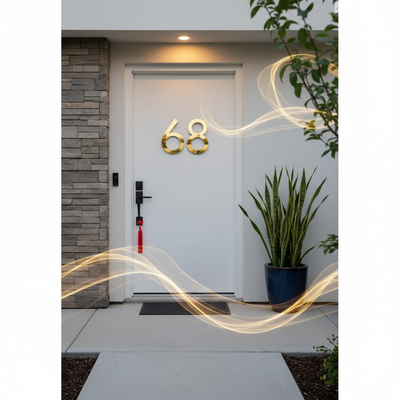
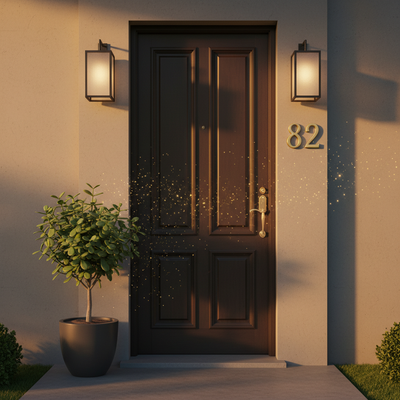
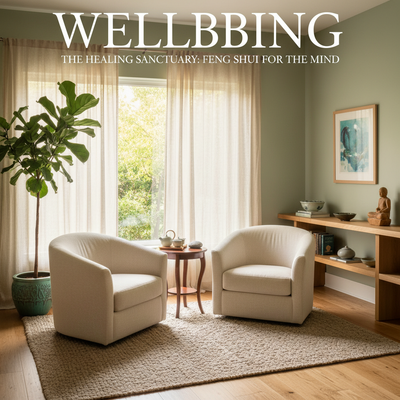
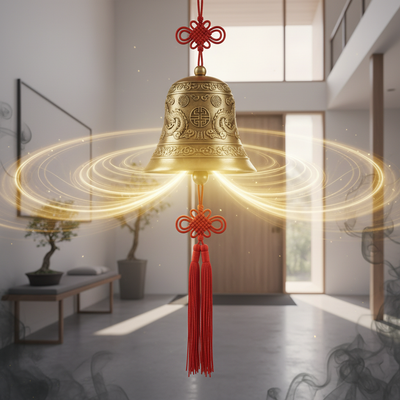


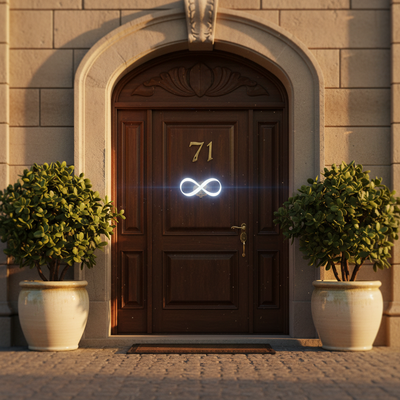

0 comments